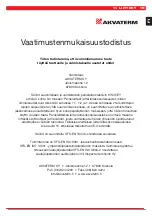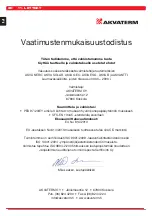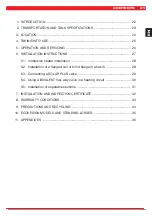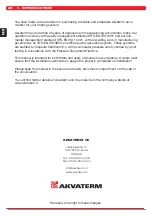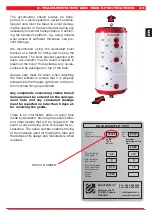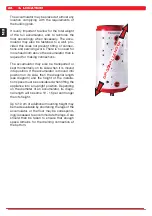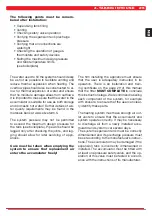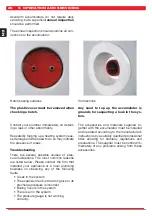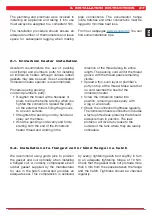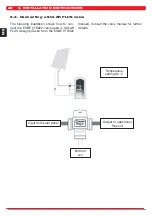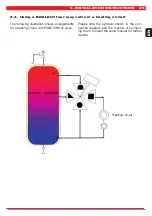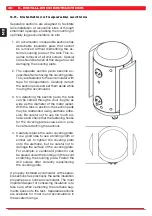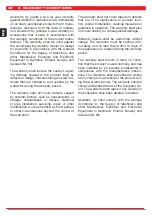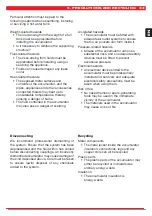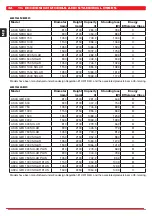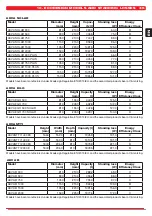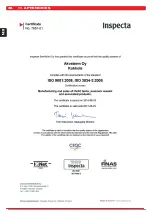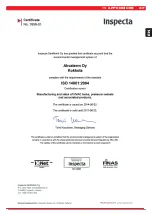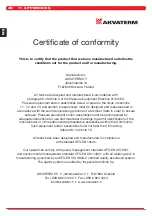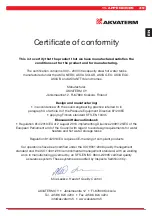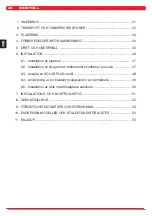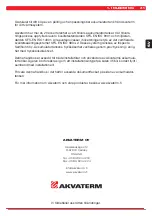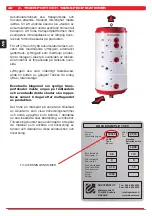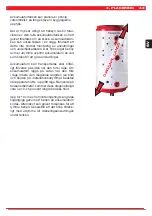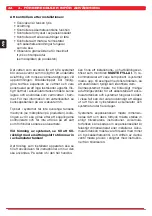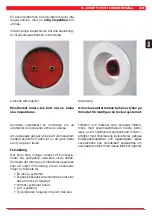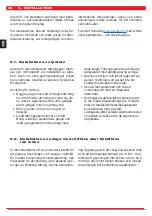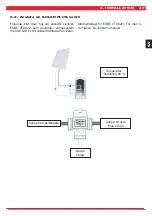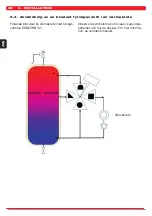
33
9. PRECAUTIONS AND RECYCLING
Particular attention must be paid to the
following aspects when assembling, installing
or servicing a hot water tank:
Weight-related hazards
• The load arising from the weight of a full
tank must be appreciated before
installing the accumulator.
• Is it necessary to reinforce the supporting
structure?
Fluid-related hazards
• The risks arising from fluids must be
appreciated before installing, using or
servicing the appliance.
• Fluids can cause damage if any leaks
occur.
Heat-related hazards
• The exposed metal surfaces and
contents of the accumulator, and the
pipes, appliances and other accessories
connected thereto may heat up to
considerable temperatures, thereby
causing a danger of burns.
• The fluid contained in the accumulator
may also pose a danger of scalding.
Air-related hazards
• The accumulator must be fitted with
adequate air outlet systems to ensure
that no air pockets can form inside it.
Pressure-related hazards
• Misuse of the accumulator can pose
substantial risks, and so adequate safety
devices must be fitted to prevent
excessive pressure.
Electrical hazards
• All electrical devices fitted to the
accumulator must be professionally
installed and serviced, and adequate
electrical safety precautions must be
taken when using them.
Risk of fire
• No naked flames or spark-generating
tools may be used in the immediate
vicinity of the accumulator.
• The materials used in the accumulator
may cause a risk of fire.
Disconnecting
We recommend professional dismantling of
the system. Ensure that the system has been
depressurised and the fluid within has cooled
before disconnecting couplings. An incorrectly
dismantled accumulator may cause damage of
the kind described above. Care must be taken
to ensure lawful disposal of any chemicals
added to the system.
Recycling
Metal components
• The metal jacket inside the accumulator
insulation, connections, legs and any
copper coils can all be recycled.
Plastic parts
• The plastic parts of the accumulator may
either be recycled or incinerated as
ordinary energy waste.
Insulation
• The accumulator insulation is
energy waste.
EN
Summary of Contents for AKVA B 2000
Page 17: ...17 11 LIITTEET F I ...
Page 18: ...18 11 LIITTEET F I ...
Page 36: ...36 11 APPENDICES E N ...
Page 37: ...37 11 APPENDICES E N ...
Page 55: ...55 11 BILAGOR S V ...
Page 56: ...56 11 BILAGOR S V ...
Page 74: ...74 11 ANLAGEN D E ...
Page 75: ...75 11 ANLAGEN D E ...
Page 78: ......
Page 79: ......

